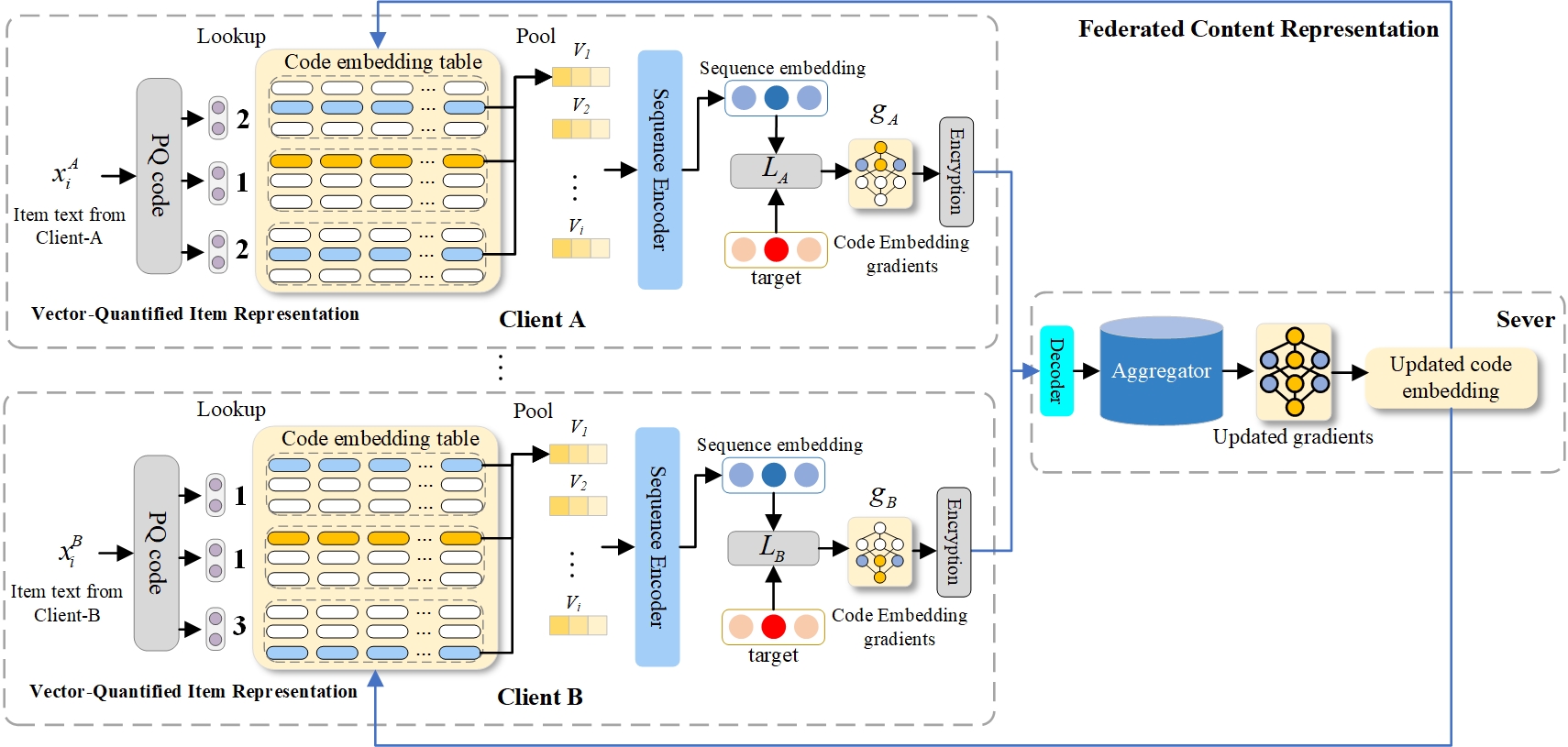Prompt-enhanced Federated Content Representation Learning for Cross-domain Recommendation
Cross-domain Recommendation (CDR) as one of the effective techniques in alleviating the data sparsity issues has been widely studied in recent years. However, previous works may cause domain privacy leakage since they necessitate the aggregation of diverse domain data into a centralized server during the training process. Though several studies have conducted privacy preserving CDR via Federated Learning (FL), they still have the following limitations: 1) They need to upload users' personal information to the central server, posing the risk of leaking user privacy. 2) Existing federated methods mainly rely on atomic item IDs to represent items, which prevents them from modeling items in a unified feature space, increasing the challenge of knowledge transfer among domains. 3) They are all based on the premise of knowing overlapped users between domains, which proves impractical in real-world applications. To address the above limitations, we focus on Privacy-preserving Cross-domain Recommendation (PCDR) and propose PFCR as our solution. For Limitation 1, we develop a FL schema by exclusively utilizing users' interactions with local clients and devising an encryption method for gradient encryption. For Limitation 2, we model items in a universal feature space by their description texts. For Limitation 3, we initially learn federated content representations, harnessing the generality of natural language to establish bridges between domains. Subsequently, we craft two prompt fine-tuning strategies to tailor the pre-trained model to the target domain. Extensive experiments on two real-world datasets demonstrate the superiority of our PFCR method compared to the SOTA approaches.
PDF Abstract



